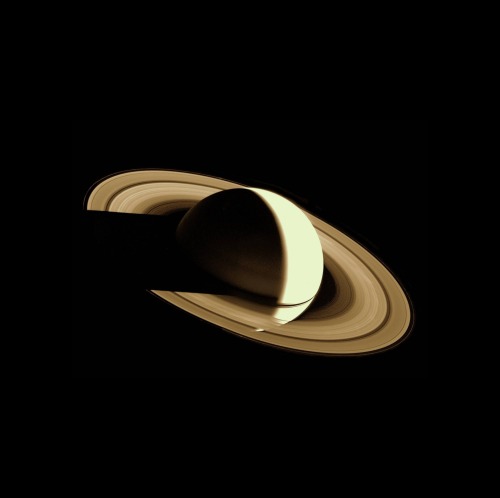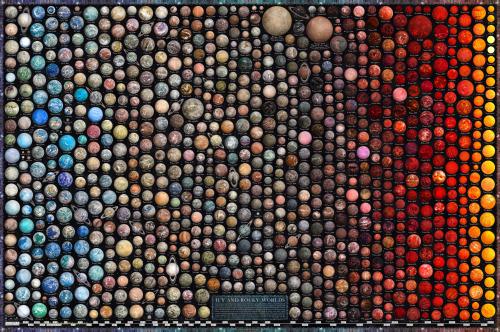Saturn Observed By Space Probe Voyager 1 On November 16, 1980

Saturn observed by space probe Voyager 1 on November 16, 1980
Credit: NASA
More Posts from Ad-astra-affecte-spe and Others

Glorious Neptune, observed by Voyager 2 on August 24, 1989.
(NASA/Kevin Gill)

The Milky Way and its red nebulae hanging over the Isaac Newton Telescope at La Palma // Jakob Sahner

November 12, 1980: Voyager 1 made its closest approach to Saturn, flying within 124,000 kilometers (77,000 miles) of the ringed planet.


working in space (x)

Over 800 terrestrial exoplanets visualized and arranged according to their equilibrium temperature and size.
chart by u/mVargic


A solar eclipse seen from space.

The California Nebula, NGC 1499 // Alex Weinstein
The bright star to the right is Menkib (ξ Persei), whose name comes from the Arabic phrase mankib al Thurayya meaning "shoulder of the Pleiades".

NGC 1365, Heart of the Universe

The Sun’s corona during a solar-eclipse.
-
 xcxsz reblogged this · 3 weeks ago
xcxsz reblogged this · 3 weeks ago -
 cozycelestials reblogged this · 3 weeks ago
cozycelestials reblogged this · 3 weeks ago -
 fivestarsoulmotel reblogged this · 3 weeks ago
fivestarsoulmotel reblogged this · 3 weeks ago -
 fivestarsoulmotel liked this · 3 weeks ago
fivestarsoulmotel liked this · 3 weeks ago -
 blacksoular reblogged this · 3 weeks ago
blacksoular reblogged this · 3 weeks ago -
 blacksoular liked this · 3 weeks ago
blacksoular liked this · 3 weeks ago -
 jishyoshin reblogged this · 3 weeks ago
jishyoshin reblogged this · 3 weeks ago -
 jishyoshin liked this · 3 weeks ago
jishyoshin liked this · 3 weeks ago -
 fklckwd liked this · 3 weeks ago
fklckwd liked this · 3 weeks ago -
 slumsaintt reblogged this · 3 weeks ago
slumsaintt reblogged this · 3 weeks ago -
 soulsconnection3003 reblogged this · 3 weeks ago
soulsconnection3003 reblogged this · 3 weeks ago -
 d0nutbuff3r liked this · 4 weeks ago
d0nutbuff3r liked this · 4 weeks ago -
 imprisonnomore liked this · 1 month ago
imprisonnomore liked this · 1 month ago -
 marielunar reblogged this · 1 month ago
marielunar reblogged this · 1 month ago -
 vvxldflqvver reblogged this · 1 month ago
vvxldflqvver reblogged this · 1 month ago -
 ratsawgod reblogged this · 2 months ago
ratsawgod reblogged this · 2 months ago -
 juju9715 liked this · 2 months ago
juju9715 liked this · 2 months ago -
 motormaaaan liked this · 2 months ago
motormaaaan liked this · 2 months ago -
 twoseparatecoursesmeet liked this · 2 months ago
twoseparatecoursesmeet liked this · 2 months ago -
 houseofcatwic liked this · 2 months ago
houseofcatwic liked this · 2 months ago -
 charlamagne-ptomaine reblogged this · 2 months ago
charlamagne-ptomaine reblogged this · 2 months ago -
 goldamsterdam liked this · 2 months ago
goldamsterdam liked this · 2 months ago -
 cunhampaye liked this · 2 months ago
cunhampaye liked this · 2 months ago -
 ne8na reblogged this · 2 months ago
ne8na reblogged this · 2 months ago -
 warriorhealer liked this · 2 months ago
warriorhealer liked this · 2 months ago -
 glitterfittans liked this · 2 months ago
glitterfittans liked this · 2 months ago -
 glitterfittans reblogged this · 2 months ago
glitterfittans reblogged this · 2 months ago -
 xdxtt liked this · 2 months ago
xdxtt liked this · 2 months ago -
 stargirlisle reblogged this · 2 months ago
stargirlisle reblogged this · 2 months ago -
 meetlyss liked this · 2 months ago
meetlyss liked this · 2 months ago -
 kohsette reblogged this · 2 months ago
kohsette reblogged this · 2 months ago -
 kohsette liked this · 2 months ago
kohsette liked this · 2 months ago -
 citrusapphire reblogged this · 2 months ago
citrusapphire reblogged this · 2 months ago -
 mint-mango liked this · 2 months ago
mint-mango liked this · 2 months ago -
 milleniumdyke reblogged this · 2 months ago
milleniumdyke reblogged this · 2 months ago -
 acorneredheart reblogged this · 3 months ago
acorneredheart reblogged this · 3 months ago -
 bardicnat reblogged this · 3 months ago
bardicnat reblogged this · 3 months ago -
 reader-writer-fucker reblogged this · 3 months ago
reader-writer-fucker reblogged this · 3 months ago -
 adayinthelifeofteyah liked this · 3 months ago
adayinthelifeofteyah liked this · 3 months ago -
 flight-by-night reblogged this · 3 months ago
flight-by-night reblogged this · 3 months ago -
 marielunar reblogged this · 3 months ago
marielunar reblogged this · 3 months ago -
 marielunar liked this · 3 months ago
marielunar liked this · 3 months ago -
 marycloset reblogged this · 3 months ago
marycloset reblogged this · 3 months ago -
 marycloset liked this · 3 months ago
marycloset liked this · 3 months ago -
 stainedglassslut reblogged this · 3 months ago
stainedglassslut reblogged this · 3 months ago -
 tenderfemme liked this · 3 months ago
tenderfemme liked this · 3 months ago -
 jaderiverdelta reblogged this · 3 months ago
jaderiverdelta reblogged this · 3 months ago

★•Astronomy, Physics, and Aerospace•★ Original and Reblogged Content curated by a NASA Solar System Ambassador
204 posts
